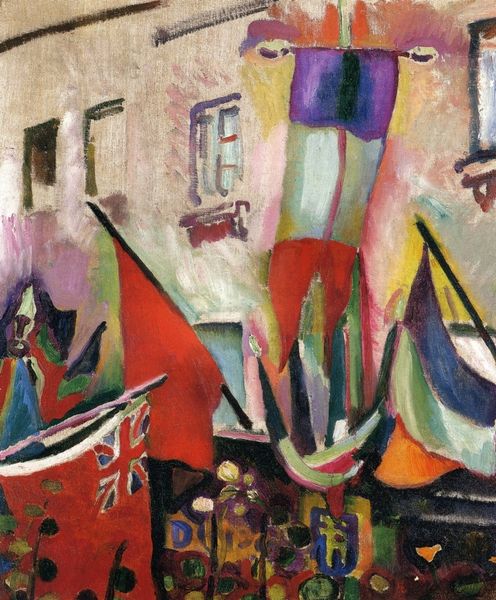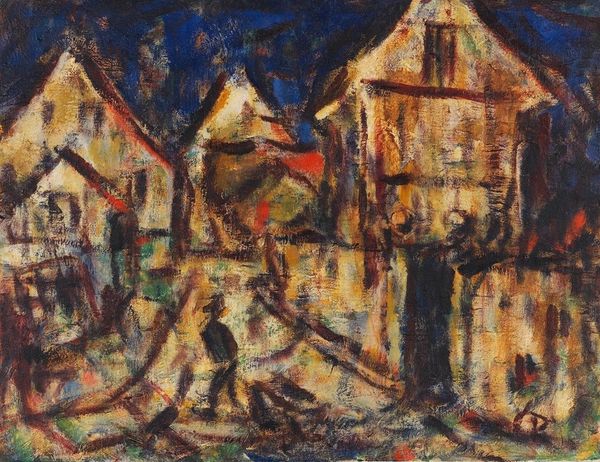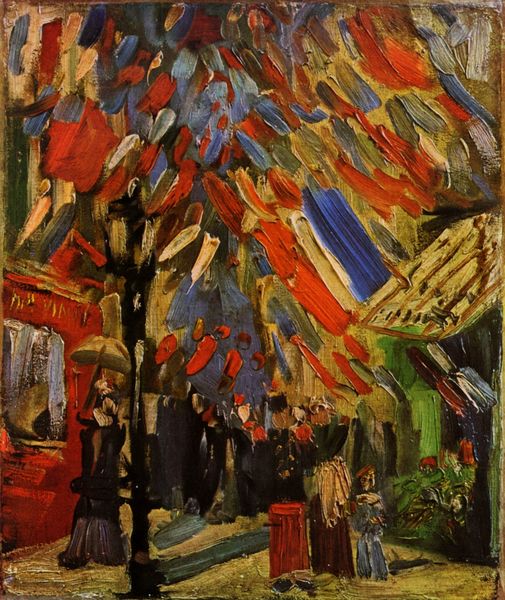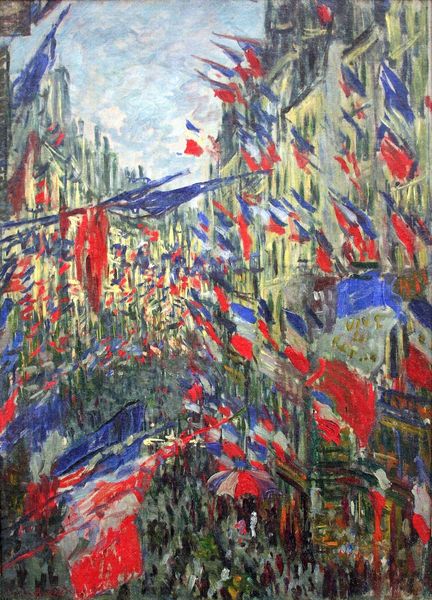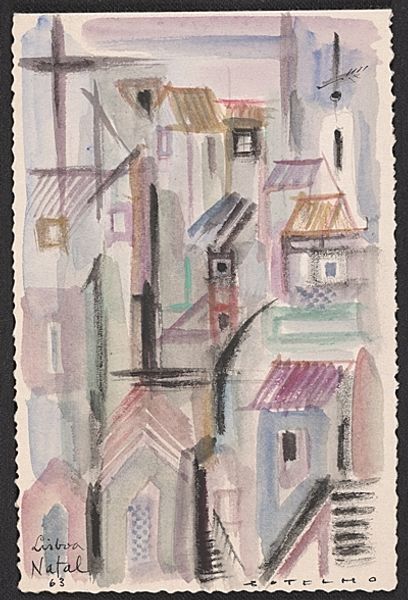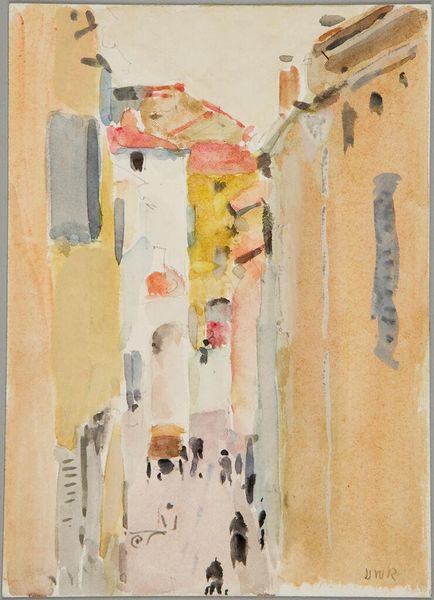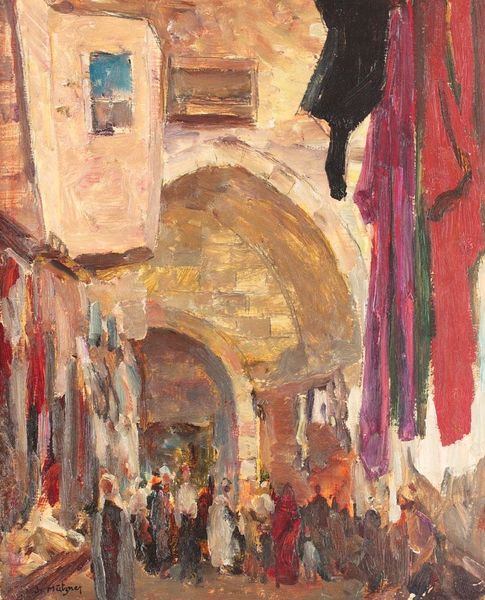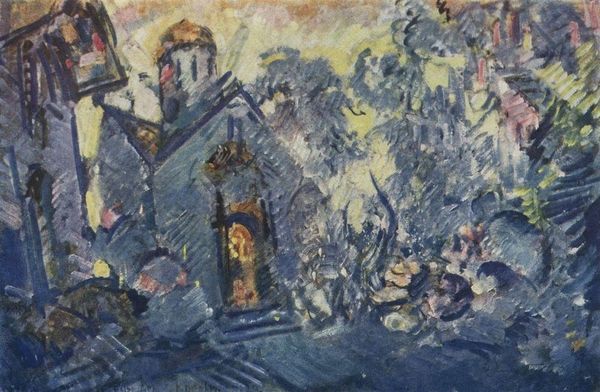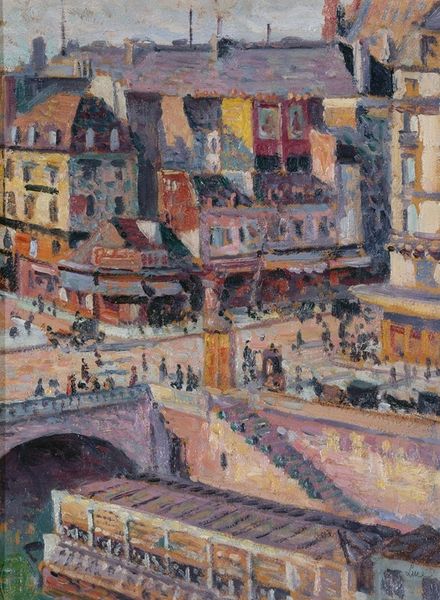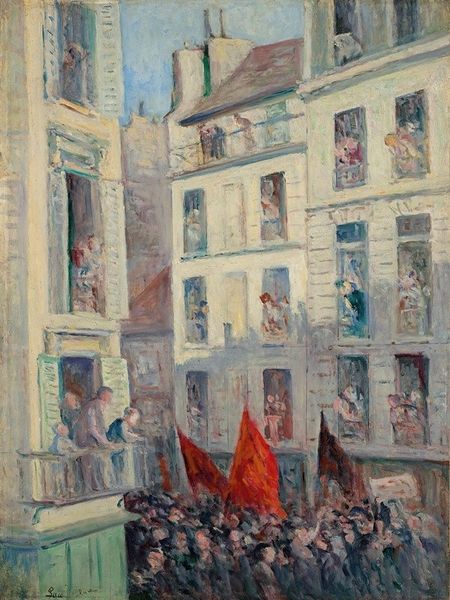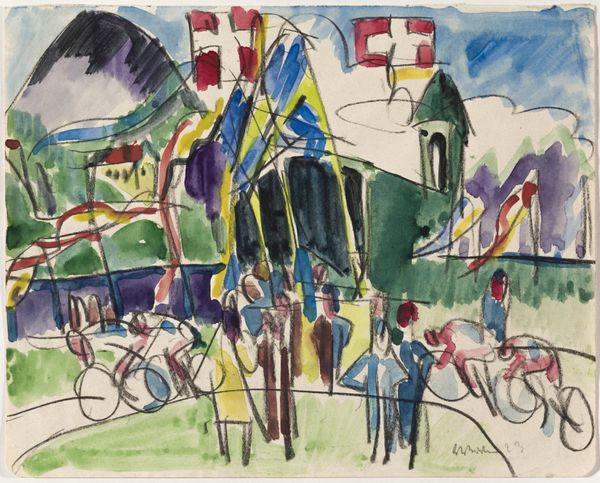
#
water colours
#
graffiti art
#
handmade artwork painting
#
acrylic on canvas
#
street graffiti
#
painting painterly
#
painting art
#
watercolour bleed
#
watercolour illustration
#
watercolor
Dimensions: overall: 54.6 x 37.8 cm (21 1/2 x 14 7/8 in.) framed: 63.8 x 47.3 x 3.6 cm (25 1/8 x 18 5/8 x 1 7/16 in.)
Copyright: National Gallery of Art: CC0 1.0
Editor: So, this painting is Raoul Dufy's "July 14 in Le Havre," painted in 1906. It feels so energetic and lively with all those flags! What do you see in this piece in terms of its historical or cultural meaning? Curator: Well, it's fascinating how Dufy captures a sense of public celebration. The date itself, July 14th, commemorates Bastille Day, a pivotal moment in the French Revolution. These public holidays played a vital role in forging national identity. Look at how the flags dominate the composition; they're not just decorative. What statement is Dufy making, do you think, by choosing this imagery? Editor: Maybe about patriotism or national pride? It also feels like he's representing the energy of the crowd through those quick brushstrokes. Curator: Precisely. And think about the role of art in portraying these national celebrations. Art becomes a tool for shaping collective memory, isn't it? By immortalizing this festive atmosphere, Dufy contributes to the ongoing narrative of French identity, but also it showcases a shift of styles that will lead to the Fauvist movement. Editor: That makes sense. I hadn’t considered how the painting itself becomes part of that cultural memory. Is there anything else that seems particularly significant about this specific portrayal? Curator: Notice the setting, Le Havre. As a port city, it's a gateway, a place of exchange. By placing this patriotic scene in Le Havre, Dufy perhaps alludes to France’s relationship with the wider world, its colonial connections and the influx of different cultural influences, as shown by all of the various flags on display. The politics of public display and its diverse influences, shaped art's trajectory, no? Editor: I never thought about it in those terms. So it’s not just a snapshot of a holiday, but a commentary on national identity, and France’s openness to diverse influences. Curator: Exactly! It is not just an observation of Bastille Day. Instead, it is a representation of political and social complexities, condensed into a seemingly simple festive scene. Editor: That's given me a lot to think about. Thanks for sharing that insight!
Comments
No comments
Be the first to comment and join the conversation on the ultimate creative platform.


